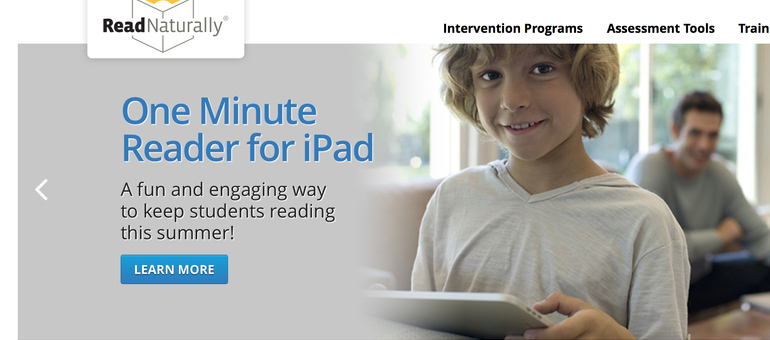When we redesigned our website this past spring, our goal was to create a user-friendly information hub where educators would feel supported and involved. Based on the feedback we’ve gotten so far, site users have been extremely satisfied. If you haven’t had a chance yet, be sure to check it out! We want to draw your attention to a couple of areas we’re especially excited about.
Read more Does “summer reading” sound to your students like a chore? You know reading can be just as exciting as any other summer activity, but your students may need a little convincing. These last couple weeks of school, take some time to brainstorm and share all the fun possibilities for summer reading. The web is full of information on this topic. Here are a few of our favorite resources:
Read more As the end of the school year approaches, you’ll likely want to report out on the progress your students have made using the Read Naturally strategy. Many educators create end-of-year reports on each student, send home letters to explain progress to parents/guardians, and summarize overall performance for the school principal. Because reporting is a critical part of your Read Naturally program, we’ve worked hard to make this process easy and user-friendly.
Read more We hope your students spend the upcoming summer break running around playgrounds, catching fireflies, and having plenty of fun. We also hope they maintain the reading skills they’ve worked so hard to develop this year. Is there a way to combine having fun with continuing to build reading...
Read more You’re browsing the shelves of your favorite bookstore. Book spines of various sizes and colors flank a book whose cover is facing outward, looking you squarely in the eye. Not surprisingly, this is the book that interests you. Someone has clearly decided it’s special. Which...
Read more The Read Naturally strategy delivers remarkable results when used correctly. Numerous studies have proven this fact, and countless teachers observe it every day. If you’re using the Read Naturally strategy and not getting the results you hope for, one simple change will often do the trick:...
Read more Spring conferences are fast approaching! As you share your students’ fluency progress with their parents/guardians, point out the ways they can support this progress at home. Consider offering our “fluency at home” letter, which explains to parents how they can use teacher modeling, repeated reading, and progress monitoring at home.
Read more This time of year can find many students lacking in motivation. Thankfully, there are many simple ways to spice up your Read Live or Encore program to keep your students engaged.
One easy way to give students a motivation boost is to have them track the number of stories they complete each week. As they try to match or beat their score from the previous week, students are incentivized to put forth their best effort each day.
Read more When we developed Read Naturally Encore and Read Live, we placed a special emphasis on vocabulary development. Students using these tools now have more vocabulary support than ever, and their reading comprehension is benefiting.
Read more One of the things teachers love best about the Read Naturally strategy is the concrete data they acquire about their students’ fluency development. The graphs and reports you generate in Encore and Read Live give you a clear picture of each student’s growth. Knowing how to apply this information ensures your students continue to progress at an appropriate pace.
Read more 

 Share your student’s success story—nominate him or her for our Star of the Month award. Win a Barnes & Noble gift card for the student and a Read Naturally gift certificate for your class!
Share your student’s success story—nominate him or her for our Star of the Month award. Win a Barnes & Noble gift card for the student and a Read Naturally gift certificate for your class!